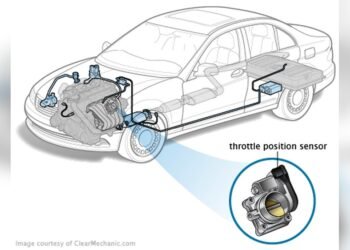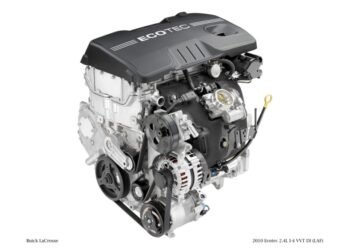Evaporative leak detection is essential for vehicle maintenance. It helps identify fuel system leaks.
Understanding evaporative leak detection can save you time and money. Small leaks in the fuel system can cause big problems. Detecting these leaks early prevents costly repairs and improves fuel efficiency. This technology uses sensors to find even tiny leaks.
Knowing how evaporative leak detection works can help you maintain your vehicle better. It also ensures your car runs smoothly and safely. In this blog, we’ll explore the importance of evaporative leak detection and how it benefits you. Stay tuned to learn more about this vital aspect of car maintenance.
Introduction To Evaporative Leak Detection
Evaporative leak detection (ELD) is crucial for modern vehicles. This technology helps maintain vehicle efficiency and reduces emissions. ELD systems detect fuel vapor leaks from the fuel system. These systems are vital for meeting environmental standards. Understanding ELD can help you appreciate its importance in cars today.
Importance In Modern Vehicles
ELD systems prevent harmful fuel vapors from escaping. These vapors contribute to air pollution. Modern vehicles must meet strict emission standards. ELD systems help achieve these goals. They ensure the vehicle’s fuel system is sealed properly. This helps maintain fuel efficiency and reduces harmful emissions.
Without ELD, a vehicle could fail emissions tests. This could lead to fines or required repairs. ELD systems also help detect fuel system issues early. Early detection can prevent costly repairs later. By keeping the fuel system sealed, ELD systems improve overall vehicle performance.
Basic Principles
ELD systems work by monitoring the fuel system. They check for leaks in the fuel tank and lines. A small vacuum is created in the fuel system. The system then monitors for pressure changes. A drop in pressure indicates a possible leak.
There are several methods for ELD:
- Pressure Decay Method: Measures pressure drop over time.
- Vacuum Decay Method: Measures vacuum loss over time.
- Smoke Test Method: Uses smoke to identify leak locations.
Each method has its own advantages. The chosen method depends on the vehicle’s design. Modern vehicles often use multiple methods for accuracy.
ELD systems are integrated with the vehicle’s On-Board Diagnostics (OBD). The OBD system monitors the fuel system continuously. It alerts the driver to any issues through the dashboard indicator. This helps ensure the vehicle remains compliant with emission standards.
Understanding the basics of ELD is essential. It helps drivers maintain their vehicles properly. It also ensures they comply with environmental regulations.
| ELD Method | Description |
|---|---|
| Pressure Decay | Measures pressure drop over time |
| Vacuum Decay | Measures vacuum loss over time |
| Smoke Test | Uses smoke to identify leak locations |
Components Of Evaporative Emission Control System
The evaporative emission control system (EVAP) plays a crucial role in reducing vehicle emissions. It captures and stores fuel vapors from the fuel system, preventing them from escaping into the atmosphere. Understanding the components of the EVAP system is essential for proper vehicle maintenance.
Key Parts
The EVAP system includes several key components. The fuel tank is the first part. It stores the fuel and vapors. The fuel cap seals the tank, preventing vapors from escaping. The charcoal canister is another vital component. It traps and stores fuel vapors. The purge valve controls the flow of vapors from the canister to the engine. The vent valve allows air to enter the system when needed. These parts work together to control emissions.
Functions
Each component of the EVAP system has a specific function. The fuel tank stores fuel and vapors. The fuel cap ensures that vapors do not escape. The charcoal canister absorbs and holds the vapors. The purge valve releases the stored vapors into the engine for combustion. This helps reduce emissions. The vent valve allows fresh air to enter the system. This maintains the pressure balance. Together, these components help keep the environment cleaner.
Common Causes Of Evaporative Leaks
Evaporative leaks in your vehicle can cause various problems. Understanding the common causes helps in timely detection and repair. Below are some key factors that contribute to evaporative leaks.
Wear And Tear
Over time, wear and tear on the vehicle’s components can lead to evaporative leaks. Various parts, such as hoses and seals, may degrade. This degradation often results in small cracks or holes.
Here is a table showing common parts affected by wear and tear:
| Part | Effect of Wear and Tear |
|---|---|
| Hoses | Cracks and splits |
| Seals | Loosen and leak |
| Gas Cap | Worn out seal |
Regular inspection can help identify these issues early. Replace worn-out parts to avoid leaks.
Faulty Components
Faulty components are another common cause of evaporative leaks. These components include the charcoal canister, purge valve, and fuel tank.
Here is a list of faulty components and their impact:
- Charcoal Canister: Can get clogged and fail.
- Purge Valve: May stick open or closed.
- Fuel Tank: Possible cracks or weak spots.
Testing these components regularly can prevent leaks. Replace any faulty components to maintain the system’s integrity.
Understanding these common causes can help in maintaining your vehicle’s evaporative emission system. Regular checks and timely repairs can save you from bigger issues down the road.

Credit: eeuroparts.com
Symptoms Of Evaporative Leaks
Evaporative leaks can cause several issues in your vehicle. Recognizing the symptoms early can save time and money. Below are some common signs to watch for.
Warning Signs
Several warning signs can indicate an evaporative leak. Here are some of the most common:
- Check Engine Light: This is often the first sign. A lit check engine light can indicate a small or large leak in the system.
- Fuel Smell: If you smell fuel inside or outside your car, it could mean a leak. This can happen when fuel vapor escapes into the air.
- Poor Fuel Economy: A leak can affect your fuel efficiency. If you notice you are filling up more often, it could be a sign.
Diagnostic Codes
Diagnostic Trouble Codes (DTCs) are crucial in identifying evaporative leaks. The On-Board Diagnostic (OBD) system generates these codes. Here are some common ones:
| Code | Description |
|---|---|
| P0440 | Evaporative Emission Control System Malfunction |
| P0441 | Evaporative Emission Control System Incorrect Purge Flow |
| P0455 | Evaporative Emission Control System Leak Detected (large leak) |
| P0456 | Evaporative Emission Control System Leak Detected (small leak) |
These codes help mechanics understand the issue better. They guide them in fixing the specific problem in the evaporative emission system.
Methods For Detecting Evaporative Leaks
Evaporative leaks can cause many problems. They affect fuel efficiency and the environment. Detecting these leaks early is crucial. There are several methods to find them. Each method has its strengths. Let’s explore two popular methods: the smoke test and the pressure test.
Smoke Test
The smoke test is simple yet effective. Technicians introduce smoke into the evaporative system. Any leak will let the smoke escape. This makes the leak easy to spot. The smoke test is quick. It is also non-invasive. This means no parts need removing. Many mechanics prefer this method for its ease and speed.
Pressure Test
The pressure test is another common method. Technicians use a pressure gauge to check the system. They pressurize the system with air. If the pressure drops, there is a leak. This method is accurate. It identifies even small leaks. The pressure test is reliable. It requires special equipment. But many shops have the tools needed.
Technological Advances In Leak Detection
Technological advances in leak detection have made it easier to find and fix leaks. These new methods save time and money. They also make the process safer and more accurate.
Modern Tools
Modern tools like electronic sniffers are now used to detect leaks. These devices are very sensitive. They can find even the smallest leaks. They are also portable and easy to use. This makes them ideal for both big and small jobs.
Innovative Techniques
Innovative techniques have also improved leak detection. One such technique is the use of smoke machines. These machines release smoke into the system. If there is a leak, the smoke will escape. This makes it easy to see where the problem is.
Another technique is dye testing. A special dye is added to the system. If there is a leak, the dye will come out. This can be seen with a UV light. It is a simple and effective method.
Preventive Maintenance Tips
Evaporative leak detection is essential for maintaining vehicle efficiency and safety. Regular maintenance helps prevent costly repairs. Following these preventive maintenance tips ensures your system works flawlessly.
Regular Inspections
Conducting regular inspections of your evaporative leak detection system is vital. Check for visible signs of wear and tear. Look for cracks in hoses and connections. Inspect the gas cap for a proper seal. A loose or damaged gas cap can trigger leak detection issues.
Regular inspections should include:
- Visual checks of hoses and connections
- Ensuring the gas cap is tight and undamaged
- Monitoring the system for any error codes
Component Care
Proper component care extends the life of your evaporative leak detection system. Keep the system clean and free of debris. Dirt and debris can clog components and cause malfunctions. Use a soft brush or compressed air to clean sensitive parts.
Regular component care includes:
- Cleaning the system with a soft brush
- Using compressed air to clear debris
- Ensuring all connections are secure
By following these preventive maintenance tips, you can ensure your evaporative leak detection system remains efficient. Regular inspections and proper component care will help you avoid expensive repairs and keep your vehicle running smoothly.
Impact Of Evaporative Leaks On Vehicle Performance
Evaporative leaks in a vehicle can significantly affect its performance. These leaks occur when fuel vapors escape from the fuel system. Understanding their impact can help maintain your vehicle’s efficiency and reduce environmental damage.
Fuel Efficiency
Evaporative leaks can lead to a decrease in fuel efficiency. When fuel vapors escape, the vehicle’s engine control unit (ECU) may compensate by using more fuel. This means you will have to refuel more often, which increases your overall fuel costs.
Here are some effects of evaporative leaks on fuel efficiency:
- Increased fuel consumption
- Frequent refueling
- Higher fuel costs
Environmental Concerns
Evaporative leaks are also a concern for the environment. Fuel vapors contain harmful chemicals that contribute to air pollution. These chemicals can harm both human health and the environment.
Consider the following environmental impacts of evaporative leaks:
| Impact | Description |
|---|---|
| Air Pollution | Release of harmful vapors into the atmosphere. |
| Ozone Formation | Contributes to ground-level ozone, which is harmful. |
| Health Risks | Exposure to toxic chemicals can affect health. |
Overall, addressing evaporative leaks is crucial for both fuel efficiency and reducing environmental impact.
Safety Implications Of Unchecked Leaks
Unchecked leaks in evaporative systems can pose significant safety risks. Leaks might seem minor, but they can lead to serious problems. Addressing leaks promptly is crucial for safety.
Potential Hazards
Leaks can cause flammable vapors to escape. These vapors can ignite and cause fires. Uncontained fuel can also pose an explosion risk.
Exposure to fuel vapors can harm health. Vapors can cause headaches, dizziness, and respiratory issues. Long-term exposure can lead to more severe health problems.
Long-term Effects
Long-term exposure to fuel vapors can damage the environment. Leaked fuel can contaminate soil and groundwater. This contamination is hard to clean and can last for years.
Unchecked leaks can also damage your vehicle. Fuel loss can reduce engine efficiency. Repair costs can increase over time.
Ensuring proper leak detection is essential. It helps maintain safety and protects health and the environment.

Credit: www.amazon.com
Conclusion And Future Outlook
Evaporative leak detection plays a crucial role in vehicle maintenance. Future advancements promise more efficient and accurate detection methods. This ensures better environmental compliance and vehicle performance.
The field of evaporative leak detection has seen significant advancements. As technology evolves, new methods enhance accuracy and efficiency. This section summarizes the key points and explores future trends in evaporative leak detection.Summary Of Key Points
Evaporative leak detection is crucial for environmental safety. It helps identify leaks in fuel systems, reducing harmful emissions. Traditional methods include smoke testing and pressure decay. New technologies like infrared sensors and ultrasonic detectors offer better precision. These advancements lead to faster and more reliable leak detection.Future Trends
The future of evaporative leak detection looks promising. Emerging technologies will continue to improve detection methods. Artificial intelligence and machine learning may play significant roles. These technologies can analyze data more efficiently. They can identify patterns and predict potential leaks. This will make leak detection even more accurate. Another trend is the integration of IoT devices. These devices can monitor systems in real-time. They provide instant alerts for any detected leaks. This allows for quicker response times and reduced environmental impact. The use of sustainable and eco-friendly materials is also expected to increase. This will further enhance the effectiveness of leak detection systems. In conclusion, evaporative leak detection is evolving rapidly. The future holds many exciting developments. These advancements will ensure better environmental protection and system efficiency. “` This section provides a concise conclusion and future outlook for evaporative leak detection, with clear and SEO-friendly subheadings, easy-to-understand language, and a focus on key points and future trends.
Credit: www.amazon.com
Frequently Asked Questions
What Is Evaporative Leak Detection?
Evaporative leak detection finds fuel vapor leaks in a vehicle’s fuel system. It helps reduce emissions.
How Does Evaporative Leak Detection Work?
It uses sensors to detect fuel vapor leaks. It keeps the environment cleaner by reducing emissions.
Why Is Evaporative Leak Detection Important?
It prevents fuel vapor leaks. This helps reduce pollution and keeps your car running efficiently.
What Are Common Signs Of An Evaporative Leak?
Check engine light, fuel smell, and poor fuel economy. These are common signs of an evaporative leak.
How Can I Fix An Evaporative Leak?
Visit a mechanic. They will diagnose and fix the leak to ensure your car runs smoothly.
Conclusion
Detecting evaporative leaks is crucial for vehicle performance and safety. Regular checks help identify issues early. This avoids costly repairs and keeps emissions in check. Use the right tools for accurate detection. Knowledge about the process ensures better maintenance. Stay informed, stay safe, and keep your vehicle running efficiently.















